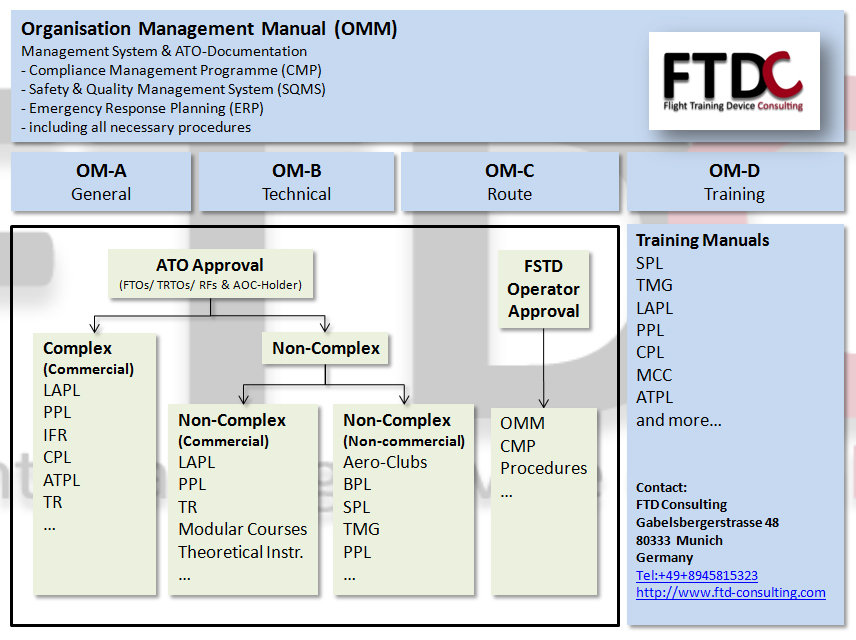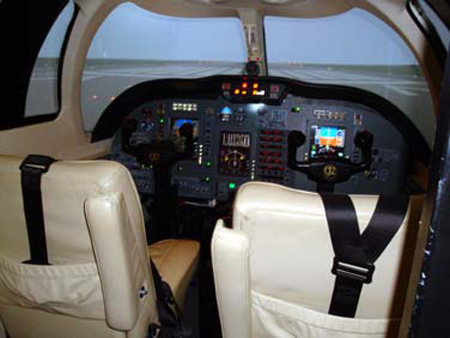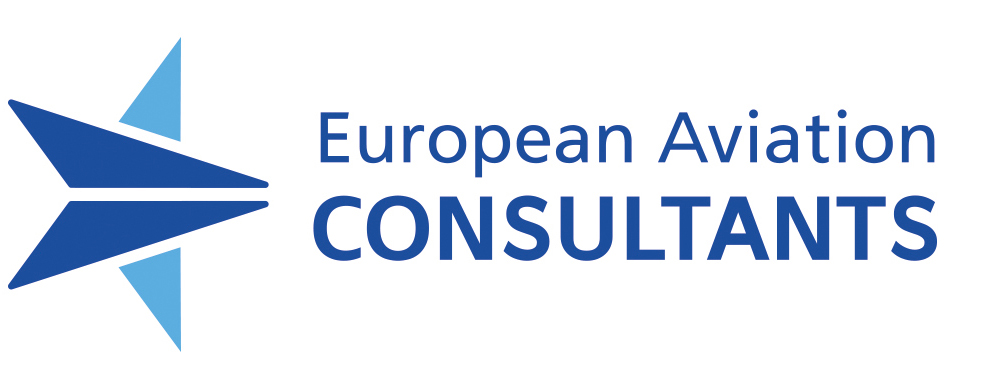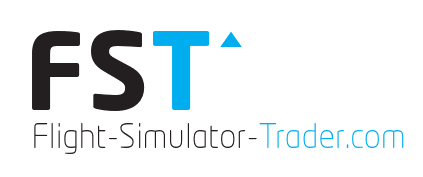ATO-Approval.com – We help you in the process…
ATO-Approval.com – According to our earlier posts, you might have recognised that FTD Consulting is currently addressing several ATO approvals for complex & non-complex organisation according to Commission Regulation (EU) No 290/2012 date 30th of March 2012, an amendment of the former Commission Regulation (EU) 1178/2011. In this post we would like to share some details with you, how the new set of documentation is structured.
If you have been operating an FTO or TRTO, you will be familiar with the set of Operations Manuals A to D with the respective information. These might well be accompanied by other manuals, such as Quality Manuals and the CAME if you operate it in-house. If you have never been an FTO or TRTO and beling to the flight school operators, the former registered facilities (RF), then this post is especially for you, but not only for you, as even for FTOs/ TRTOs, there are a lot of changes, which most won´t anticipate.
The Operation Manuals (OM A to D) and the complete set of Training Manuals (TM General plus specific manuals) have to be amended to EASA standards with the respective information and the new regulatory references. As this will consume quite some time, an operator will have to set up an Organisation Management Manual (OMM) in addition which is necessary to operate the mandatory Management System which comprises the following subsystems:
- Compliance Monitoring Program (CMP)
- Safety Management System (SMS)
- Emergency Response Planning (ERP)
If you already have an existing quality documentation and plan to amend that to the new standard, this effort is in vain as you have to re-write the whole manual and add a good number of pages. We did that with an existing FTO quality manual and found it a lot of work. If you have a none existent doumentation as you never applied for an ATO or you are a registered facility, you will drown in work as there are 10 documents comprising a 1000 pages to write and to compile according to the required EASA standards.
“But what can we do?”, you might think. Well, either you follow the instructions of PART-ORA.GEN and ORA.ATO for the management system documentation and get one, two or three skilled employees to work several months on it or you inquire with us via our project website ATO-approval. We offer not only a complete set of EASA-compliant documentation, but also consulting services for your flight school.
FTDC führt ATO Zulassung des LVB – Luftsport-Verband Bayern durch…
FTD Consulting hat den Auftrag erhalten eine ATO-Zulassung/ ATO-Approval für den LVB – Luftsport-Verband Bayern e.V. durchzuführen, einen eingetragenen Verein und derzeit noch als “Registered Facility (RF)” gemeldete Organisation. Der LVB zählt 300 Mitglieder, von denen etwa 130 Niederlassungen/ Vereine Ausbildung im privaten Luftfahrtbereich anbieten. Der LVB wird als Hauptniederlassung als sogenannte “Non-Complex Approved Training Organisation (ATO)” unter Aufsicht des Luftamtes Südbayern gemeldet. FTDC wird hierbei speziell abgestimmte ATO-Dokumentation für alle Niederlassungen/ Vereine des LVB erstellen. Ergo wird jede Niederlassung die Ausbildung gemäß den Vorgaben des LVB und der FTD Consulting durchführen und die entsprechenden Handbücher/ Operations Manuals (OMA-D) inklusive der geforderten Management System Dokumentation (mit integriertem Safety Management & Compliance Monitoring) verwenden.
Hauptaugenmerk liegt dabei auf der Dokumentation für die Bereiche Ballonausbildung/ Balloon Pilot License (BPL), Segelflugausbildung/ Sailplane Pilot License (SPL), die neue Leisure Aircraft Pilot License (LAPL), die Private Pilot License (PPL), Motorsegler/ Touring Motor Glider (TMG) und der Licenzen für einmotorige Flugzeuge/ single-engine piston aircraft (SEP) und ihrer assoziierten Instruktorenlizenzen.
Nach Abschluß des Projekts kann ein Standardset an EASA zugelassener Dokumentation für die Umwandlung von Registered Facilities (RFs) in eine Non-Complex ATO nach EASA PART-ORA durch den LVB in Zusammenarbeit mit FTD Consulting erstanden werden. FTDC bietet hierzu noch die entsprechenden Schulungen & Beratungen an.
FTDC signs contract for ATO approval with LVB – Luftsport-Verband Bayern…
FTD Consulting has signed a contract for an ATO-Approval with the LVB – Luftsport-Verband Bayern e.V. a non-profit organisation & registered facility (RF) , which is the head of about 130 associated aviation clubs providing flight training in the private pilot sector. The organisation is intended to become a Non-Complex Approved Training Organisation (ATO) under the supervision of the Luftamt Südbayern, the aviation authority for South Bavaria & Munich, Germany. FTDC is to provide a specialised set of ATO documents for all members/ branches of the ATO, ergo every member of the organisation will conduct training as predetermined by the LVB and FTD Consulting and will use the respective Operations Manuals (OMA-D) including the required Management System Documentation (with Safety & Compliance Monitoring).
Intended main areas for providing documentation, among other associated license types, are Balloon Pilot License (BPL), Sailplane Pilot License (SPL), Leisure Aircraft Pilot License (LAPL), Private Pilot License (PPL), Touring Motor Glider/ motorised sail planes (TMG) and licenses for single-engine piston aircraft (SEP) aircraft as well as their instructor ratings.
After completion of the project, a standard set of documentation can be purchase with the LVB in cooperation with FTD Consulting, providing an EASA-approved set of documents for registered facilities and future Non-Complex ATOs.
FTDC implementiert Safety Management & Compliance Monitoring für die FFH…
![]() Die FTD Consulting hat den Auftrag erhalten das sogenannte “Safety Management System & Compliance Monitoring Program” für die FTO “FFH – Südwestdeutsche Verkehrsfliegerschule.” zu etablieren. Diese Systeme sind Bestandteil des Management Systems, welches nach Verordnung (EU) 290/2012 der Kommission vom 30. März 2012, in jeder zukünftigen ATO – Approved Training Organisation unabdingbar sind. Die FTDC hatte bereits den Auftrag erhalten das Qualitätssystem unter JAR- Regularien zu implementieren und bekommt nun einen Folgeauftrag für ein “EASA-Update” der bestehenden Dokumentation. Hierbei werden alle Dokumente aktualisiert und den geltenden Standards angeglichen, sowie neue Verfahren umgesetzt, um eine erfolgreiche Umsetzung und Anwendung des Safety Management Systems und Compliance Monitoring Programms zu gewährleisten. FTDC wird weiter beratend zur Seite stehen und Hinweise zur Bereitstellung von Ressourcen und Personal geben, die mit der Anpassung einhergehen. In der Anpassung mit inbegriffen ist auch der FNPT der FFH, der ebenfalls dem Compliance Monitoring unterliegt.
Die FTD Consulting hat den Auftrag erhalten das sogenannte “Safety Management System & Compliance Monitoring Program” für die FTO “FFH – Südwestdeutsche Verkehrsfliegerschule.” zu etablieren. Diese Systeme sind Bestandteil des Management Systems, welches nach Verordnung (EU) 290/2012 der Kommission vom 30. März 2012, in jeder zukünftigen ATO – Approved Training Organisation unabdingbar sind. Die FTDC hatte bereits den Auftrag erhalten das Qualitätssystem unter JAR- Regularien zu implementieren und bekommt nun einen Folgeauftrag für ein “EASA-Update” der bestehenden Dokumentation. Hierbei werden alle Dokumente aktualisiert und den geltenden Standards angeglichen, sowie neue Verfahren umgesetzt, um eine erfolgreiche Umsetzung und Anwendung des Safety Management Systems und Compliance Monitoring Programms zu gewährleisten. FTDC wird weiter beratend zur Seite stehen und Hinweise zur Bereitstellung von Ressourcen und Personal geben, die mit der Anpassung einhergehen. In der Anpassung mit inbegriffen ist auch der FNPT der FFH, der ebenfalls dem Compliance Monitoring unterliegt.
FTDC to implement SQMS and Compliance Monitoring with FFH…
![]() FTD Consulting has been contracted to implement a Safety Management System & Compliance Monitoring Program for the german-based FTO, soon ATO “FFH – Südwestdeutsche Verkehrsfliegerschule.” This update for quality system documentation is necessary under the new EASA regulations, the Commission Regulation (EC) 290/2012 dated 30th of March 2012. FTD Consulting had already been hired to implement the flight school quality system under JAR regulations and has now been awarded to conduct the EASA-update on the current documentation. All necessary document amendments will be implemented as well as all necessary procedures in order to ensure a reliably operating Safety Management System and Compliance Monitoring Program. FTDC will also provide consulting on how to setup the resources & personnel accompanied by operating such systems.
FTD Consulting has been contracted to implement a Safety Management System & Compliance Monitoring Program for the german-based FTO, soon ATO “FFH – Südwestdeutsche Verkehrsfliegerschule.” This update for quality system documentation is necessary under the new EASA regulations, the Commission Regulation (EC) 290/2012 dated 30th of March 2012. FTD Consulting had already been hired to implement the flight school quality system under JAR regulations and has now been awarded to conduct the EASA-update on the current documentation. All necessary document amendments will be implemented as well as all necessary procedures in order to ensure a reliably operating Safety Management System and Compliance Monitoring Program. FTDC will also provide consulting on how to setup the resources & personnel accompanied by operating such systems.
Flight Simulator Trader starts operation…
 The international platform for new & used devices trades professional flight simulation training devices (FSTDs), other training devices (OTDs), simulation equipment and offers a variety of services related to flight simulation.
The international platform for new & used devices trades professional flight simulation training devices (FSTDs), other training devices (OTDs), simulation equipment and offers a variety of services related to flight simulation.
Flight Simulator Trader – http://www.flight-simulator-trader.com/ is an independent platform sponsored by FTD Consulting with the intention of trading flight simulators of all kinds. In particular, the platform trades professional flight simulation training devices (FSTDs) approved for pilot training, but it is also considered to be a platform for those to invest in entertainment flight business as it is rapidly increasing.
Furthermore, Flight Simulator Trader offers simulation equipment and cockpits for simulator use as well as a variety of services, especially linked to professional flight simulation under the EASA & FAA regulatory frame work:
- Consulting
- Qualification Support
- Preparation of EASA Documentation
- Upgrades & Relocation
- Financing Solutions
- Factory Acceptance & Evaluations
- Simulator Design
Customers´ advantages are:
- To use the platform to get listed (for free) and be able to increase the chance to sell or find new & used flight simulation devices.
- Improved market transparency for customers to see what´s out there on the market.
- Having the chance to buy new devices by getting rid of used devices quickly.
- Finding services and consulting related to flight simulation, which are offered to make the customers´ life easier (e.g. factory acceptance, relocation or qualification support).
- Benefit from deep & interlinking knowledge in the simulation industry.
- Save time & resources.
Listing with Flight Simulator Trader is free, but a sales commission applies on success.
Visit Flight Simulator Trader to see the latest offers and for service packages we can offer!
Find Flight Simulator Trader on:
Facebook – Flight Simulator Trader
Twitter – Flighsimtrader
Neue Wege in der Luftfahrt – Umwandlung Ihrer Flugschule in eine ATO unter EASA? Was ist zu beachten?
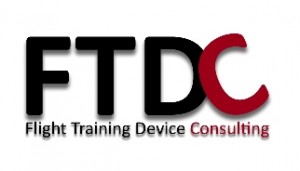 Mit dem 8. April diesen Jahres haben sich alle Luftämter der Bundesrepublik geeinigt, dass nach den neuen Bestimmungen der EASA der Prozess zur Ummeldung der Flugschulen in eine ATO, die sogenannte “Approved Training Organisation”, erfolgen kann. Entsprechende Unterlagen werden dann in den Ämtern Ihres Landes vorzufinden sein. Betroffen sind alle “Registered Facilities”, also die PPL-Flugschulen, aber auch Segelflugschulen und solche Schulen, die für die Ballonfahrer ausbilden. Zwar können die Schulen und vor allem die “RFs” ihren Betrieb wie gewohnt sogar noch bis 2015 fortführen, aber sollten sie in Erwägung ziehen einen neuen Ausbildungslehrgang einzuführen oder grundlegende Veränderungen in ihrer Operation vorzunehmen, dann werden sie gezwungen sein, eine ATO, die sogenannte “Approved Training Organisation” nach EU Verordnung 216/2008 anzumelden. Ein Beispiel ist der neue LAPL-Lehrgang der eine kostengünstigere Variante zum PPL(A), und anderer Lizenzen aus dem Bereich Segelflug und Ballonfahrt, darstellen soll und für dessen Lizenz eine Zulassung als ATO notwendig werden wird. Also ohne ATO keinen LAPL-Lehrgang heißt es dann! Auch Betereiber eines Flugsimulators sind betroffen, denn ein FSTD unter EASA zu qualifizieren bedeutet nun auch ein FSTD-Operator unter EASA zu sein.
Mit dem 8. April diesen Jahres haben sich alle Luftämter der Bundesrepublik geeinigt, dass nach den neuen Bestimmungen der EASA der Prozess zur Ummeldung der Flugschulen in eine ATO, die sogenannte “Approved Training Organisation”, erfolgen kann. Entsprechende Unterlagen werden dann in den Ämtern Ihres Landes vorzufinden sein. Betroffen sind alle “Registered Facilities”, also die PPL-Flugschulen, aber auch Segelflugschulen und solche Schulen, die für die Ballonfahrer ausbilden. Zwar können die Schulen und vor allem die “RFs” ihren Betrieb wie gewohnt sogar noch bis 2015 fortführen, aber sollten sie in Erwägung ziehen einen neuen Ausbildungslehrgang einzuführen oder grundlegende Veränderungen in ihrer Operation vorzunehmen, dann werden sie gezwungen sein, eine ATO, die sogenannte “Approved Training Organisation” nach EU Verordnung 216/2008 anzumelden. Ein Beispiel ist der neue LAPL-Lehrgang der eine kostengünstigere Variante zum PPL(A), und anderer Lizenzen aus dem Bereich Segelflug und Ballonfahrt, darstellen soll und für dessen Lizenz eine Zulassung als ATO notwendig werden wird. Also ohne ATO keinen LAPL-Lehrgang heißt es dann! Auch Betereiber eines Flugsimulators sind betroffen, denn ein FSTD unter EASA zu qualifizieren bedeutet nun auch ein FSTD-Operator unter EASA zu sein.
Aber was benötige ich denn nun für eine Ummeldung auf eine ATO oder für eine Zulassung als FSTD-Operator? Die hierfür notwendigen Voraussetzung finden sich in TEIL-ORA der EU-Verordnung 290/2012. Grundsätzlich müssen Flugschulen ihre gesamte Operation, sowie ihre Dokumentation auf die Anforderungen der EASA umstellen, d.h. die gesamte Unternehmung muss auf die passenden Voraussetzungen geprüft werden. Die Dokumentation ist ein weitaus aufwendigerer Part in dieser Angelegenheit. Für eine erfolgreiche Anmeldung sind neben den gängigen Informationen über die Flugschule vor allem Operations Manuals, die sogenannten OM A-D notwendig. In ihnen finden sich Informationen über die Flugschule und jeden einzelnen Lehrgang. Daneben muss ein Management System mit integriertem Safety Management und einem Compliance Management eingeführt werden. Alleine der Aufwand für die Erstellung dieser Manuals ist gewaltig. Als unsere Unternehmung in die Erstellung von Qualitätshandbüchern eingestiegen ist, benötigten wir für das erste genehmigungsfähige Exemplar etwa 2 Monate. Man kann sich vorstellen, wie hoch der Aufwand für 4 Handbücher ist.
Wenn Sie Hilfe benötigen und unsere Dienste in Anspruch nehmen wollen, dann melden Sie sich bei uns. Wir helfen Ihnen zeitnah den Prozess in Gang zu setzen und Ihnen durch die ATO-Anmeldung die Möglichkeit zu verschaffen mit neuen Lehrgängen wie dem LAPL neue Kunden zu akquirieren.
Want to become an EASA approved organisation, e.g. AOC holder, ATO, FSTD-Operator or other…?
 Are you planning to become an EASA approved organisation? Do you need help and assistance in creating all necessary documents? Do you have lots of things to do and are tired of being the pen-pusher and shoving paperwork around? Then it might be time to contact us in order to save you a lot of time and headache. Aside from our services in flight simulation, we have specialised in offering assistance in documentation for aviation businesses world-wide. Mainly, we focus on ATOs and AOC holders, but also we assist Registered facilities and other aviation-related businesses. Before we had specialised in quality documentation and the approval of Flight Training Organisations, but with the Basic regulation (EC) 216/2008 and its further regulatory frame work, its has become vital for organisations to update their documentation to gain an EASA approval. So what documents do you need to have handy?
Are you planning to become an EASA approved organisation? Do you need help and assistance in creating all necessary documents? Do you have lots of things to do and are tired of being the pen-pusher and shoving paperwork around? Then it might be time to contact us in order to save you a lot of time and headache. Aside from our services in flight simulation, we have specialised in offering assistance in documentation for aviation businesses world-wide. Mainly, we focus on ATOs and AOC holders, but also we assist Registered facilities and other aviation-related businesses. Before we had specialised in quality documentation and the approval of Flight Training Organisations, but with the Basic regulation (EC) 216/2008 and its further regulatory frame work, its has become vital for organisations to update their documentation to gain an EASA approval. So what documents do you need to have handy?
For ATOs:
Commission Regulation (EC) 290/2012, an amendment of former commission regulation 1178/2011, together with its AMCs and guidance material, contains all administrative procedures necessary to apply for ATO. Apart from listing and re-checking all employee records, facility requirements, training equipment and many more items, you will need to introduce a Management System, which is a extended version of the former FTO/ TRTO quality system setup. Not only do you have to restructure all your former documentation, but also you have to add a Safety Management System and a Compliance Monitoring System to your existing Quality System, which is a combined SQMS and now forms a part of the management system setup. Your operations and training manuals will have to be readjusted according to PART-FCL.
For FSTD-Operators:
According to Commission Regulation (EC) 290/2012, also organisations to hold an FSTD certificate under EASA will have to readjust their administrative procedures and update their documentation. Her also, a Management System, with a Compliance Monitoring System for your FSTD is necessary. The process for initial and recurrent qualifications stays basically the same but here also you will need to introduce a Dossier for display to your inspectors during audit. Without proper docuements you will not receive a qualification on your FSTD.
For AOC holders:
The requirements are listed in PART ORO, its AMCs and GMs, Apart from listing and re-checking all employee records, facility requirements, equipment and many more items, you will need to introduce a Management System alike the ones you find for ATOs and FSTD-Operators. As AOC holders already have a Safety Management System in place, this needs to be updated and incorporated into the management system. However, those AOC holders providing training for their own purposes will also have to apply for ATO and therefore will also have to have two sets of documentation, one for OPS, one for FCL.
As this whole process is indeed a lot of work to be done and as we know that it takes ages to even write a simple quality manual, we would like to offer our services to you and support you in the EASA transition process.
Good luck for your EASA approval!
Used DA42 Diamond Simulation FNPTII/ FTD Level 5 for sale…
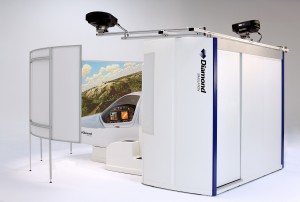 FTD Consulting is entitled to sell a used Diamond DA42 FNPTII / FTD Level 5 located at one of our customers location here in Germany. The device resembles a DA42 with Thielert engines and is in excellent condition with a low amount of hours. If you want to see the specifications, please see the expose at the used aircraft site provided by Diamond UK.
FTD Consulting is entitled to sell a used Diamond DA42 FNPTII / FTD Level 5 located at one of our customers location here in Germany. The device resembles a DA42 with Thielert engines and is in excellent condition with a low amount of hours. If you want to see the specifications, please see the expose at the used aircraft site provided by Diamond UK.
Used Flight Simulator for purchase: Citation C525 FTD 2 and/ or FNPTII MCC acc. CS-FSTD (A)…
We have a Citation CJ2 525 A for immediate purchase with a low amount of hours. Please inquire with FTD Consulting on interest. More details on device as follows:
Manufacturer: Virtual Reality Media/ Simvision, built in 2008
Type of Aircraft: Cessna Citation 525A – CJ2
Qualification Level: FTD 2 and/ or FNPTII MCC according JAR-FSTD A/ CS-FSTD (A)
Engine(s): Williams FJ 44-2C
Avionics: Collins ProLine 21,
Additional Equipment: FMS (Universal), GPWS, GPS, Wx-Radar
Image Generator: VRM IMMAX 133×36
Flight Simulator qualification…
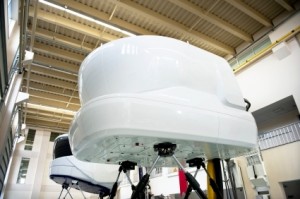 The qualification of flight simulators is always a difficult task. Not alone considering the simulators´ demanding qualification requirements, but also the difficult task of having all tasks resolved by the date of qualification.The process of course would be much easier, if it was not for meeting the tight time frames and budgets. So, what does the usual process look like?
The qualification of flight simulators is always a difficult task. Not alone considering the simulators´ demanding qualification requirements, but also the difficult task of having all tasks resolved by the date of qualification.The process of course would be much easier, if it was not for meeting the tight time frames and budgets. So, what does the usual process look like?
Step 1: Customer orders FSTD after all decision-making processes have ended. Yes, of course, but usually the decision-making process is taking a lot longer than normally anticipated. As some manufacturers are not able to provide offers for their devices, especially when dealing with FFS, the time receiving an offer can easily take 3 months. According to our experience, there are even some fix-base FSTD providers (FNPTII or FTD) who will take ages to send out offers and making it impossible to have a comparison of offers on short-notice. Then, also inspecting those devices in the factory (which most often is not possible as devices are built just-in-time) or at a customers site (often not wished as competition is everywhere), the process takes a lot longer than desired.Problem is, when airlines or flight schools receive their aircraft they would also like to have the simulator at the same time. As FSTDs are usually not a serial product but most often a custom-built solution and customers are not familiar with the complicated processes of production and qualification here also, we experience a lot of pressure deriving from unrealistic desired delivery times. By the time negotiations start, normally FSTD manufacturers have enough time for production, but with all the delays, months of useful time are lost. We often hear customers saying:”But we need to start our course at that date!” We understand that, but usually it is not us delaying the process. So what else will happen to spoil a successful start of pilot training.
Step 2: Applying for FSTD qualification/ certification with your local CAA. According to most national aviation authorities an operator of a FSTD has to folow a strict protocol. You may apply for a so-called initial qualification several months prior to the desired date, but usually not earlier and also you can not rely on the desired date. Due to the high workload of the CAA inspectors, especially now as we face the transition to EASA, it can not be guqaranteed that desired dates can be achieved. Then most important, some CAAs will only accept apllications for FSTD qualification with “all” necessary documents sent in with the application. Two documents pose the most difficult problems. Usually, a quality system manual with FSTD procedures is needed, which is the duty of every operator. To produce such document according to EASA PART-FCL/ PART-ORA, customers need courses and a considerable time to produce this document. This process is often underestimated. The Qualification Test Guide – QTG, which is a document listing the performance data of the FSTD and which is specific to every device is usually a bigger problem. This document is huge and can only be produced once production of the respective FSTD has reached the terminal phase. So, here is the big problem! How to apply for an initial qualification 3 months before, when the decision making process has been long and a specific QTG can only be recorded 2 or 3 weeks before delivery? Some CAAs will accept a sample QTG document if comparable devices have been produced earlier. Some CAAs are just not willing to accept it. Ergo, sometimes the device is already delivered but the customer has still to wait for several months, which poses a huge problem for conducting cost-effective operations of a flight school or airline.
Step 3: Manufacturing processes & accepting FSTD at factory. We all know the problems even with small orders and repairs. You just can not influence them and for sure always something is going to happen. Parts are not delivered and more often…honestly, the attitude of some manufacturers and/ or their employees pose a big problem in meeting the deadlines. By not focusing on the processes and the quality or due to the lack of skilled personnel, by the time of acceptance, the device is in desolate condition. If the customer is not carefully inspecting the device, he will pay the bill as soon as it comes to qualification on-site! It is vital to check every aspect of the device and look into every detail carefully. But how to do that, if you have no experience with FSTDs at all? Some pilots might think:”Well, it just like the aircraft!” But it isn´t. FSTDs follow other regulatory rules and technical requirements. As we have seen the manufacturing processes over the years, we know about the typical problems. During acceptance, mostly a huge pile of problems is found which further delays the delivery.
Step 4: Shipping, customs and receiving devices on-site. Well, the shipping dates seem to be very reliable, just the decisions on air transport or by sea will show dramatic differences, but are always very easy to plan. Customs is a totally different problem. Usually, we anticipate customs periods of about 2 days to 7 days, but we have countless expamples where this process took about 2 months! After you pass the customs, even the delivery from final port to destination can be a problem. We had cases where the transport was robbed, the truck driver simply decided to come another day and where trucks and loading where damaged. This alone can spoil the whole delivery and installation process, especially when you planned it shortly before the actual qualification date.
Step 5: Installation & Testing with re-run of the QTGs. As we are all human, most customers will not read the requirments for the FSTD facilities cerafully. This often leads to a lot of problems during delivery. From small doors to not having simple crowbars or forklifts, we have seen it all. We had cases where we had to break up walls, and also we had an inexperienced crane-operator who flipped over a cockpit (we did not hire this guy, nor did we have the responsibility). Installing FSTDs is a very special process and not everybody can do it from start to the end. Once the device is installed, the whole retesting process starts and also parts of the QTG have to be re-run in order to ensure that performance of the FSTD has not changed. Here, again a lot of problems show up and once updates are done on the dvice, usually this is where you have even more problems.
Step 6: Judgement day! Day of the initial qualification! Assuming you have survived the process up to here, still there are a lot of possibilities to fail. Do you have all documents in available (Checklists, etc.)? Will the device operate reliably without any break-down? What type of character is the inspector? We had even seen problems with qualification once an operator started a huge verbal fight with an inspector and things got personal. You never know, what happens.
Final conclusion: It is recommended to have a professional partner to deal with every aspect of flight simulation! That is what we do and how we can help!
Our new product, a cylindrical screen…
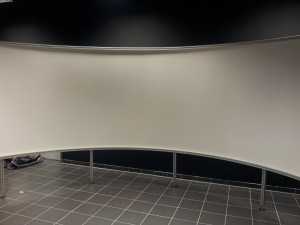 FTDC presents a cylindrical screen solution to be used in the field of flight simulation as well as other applications, such as tradeshows, gaming, displays, etc. This solution can be adjusted/ custom-built to customers needs. Our standard model is built for a horizontal field of view of about 180° and a vertical field of view of about 35°. Extensions of the field of view can be arranged on request. Our customers may inquire via FTD Consulting. Meanwhile a dedicated website http://www.simulatorscreen.com is under development and we hope to present it to you very soon.
FTDC presents a cylindrical screen solution to be used in the field of flight simulation as well as other applications, such as tradeshows, gaming, displays, etc. This solution can be adjusted/ custom-built to customers needs. Our standard model is built for a horizontal field of view of about 180° and a vertical field of view of about 35°. Extensions of the field of view can be arranged on request. Our customers may inquire via FTD Consulting. Meanwhile a dedicated website http://www.simulatorscreen.com is under development and we hope to present it to you very soon.
FTDC präsentiert zylindrische Leinwandlösung…
 FTDC hat eine zylindrische Leinwandlösung entwickelt, die im Bereich Flugsimulation zur Anwendung kommt, wie auch in anderen Bereichen wie z.B. Messe, Gaming, Displays, etc. Diese Lösung kann auf Kundenwunsch angepasst werden. Unser Standardmodell ist für einen Bereich von etwa 180° horizontal und 35° vertikal ausgelegt. Erweiterungen des Systems sind möglich und können auf Kundenwunsch durchgeführt werden. Anfragen und Informationen über das Produkt erhalten Sie bei FTD Consulting. Derzeit ist eine eigene Website mit Online-Shop in Entwicklung. Diesen werden Sie unter http://www.simulatorscreen.com erreichen können.
FTDC hat eine zylindrische Leinwandlösung entwickelt, die im Bereich Flugsimulation zur Anwendung kommt, wie auch in anderen Bereichen wie z.B. Messe, Gaming, Displays, etc. Diese Lösung kann auf Kundenwunsch angepasst werden. Unser Standardmodell ist für einen Bereich von etwa 180° horizontal und 35° vertikal ausgelegt. Erweiterungen des Systems sind möglich und können auf Kundenwunsch durchgeführt werden. Anfragen und Informationen über das Produkt erhalten Sie bei FTD Consulting. Derzeit ist eine eigene Website mit Online-Shop in Entwicklung. Diesen werden Sie unter http://www.simulatorscreen.com erreichen können.
FTDC entwickelt eine zylindrische Leinwandlösung…
 FTDC präsentiert eine zylindrische Leinwandlösung zur Anwendung im Simulationsbereich, wie auch in anderen Bereichen, wie z.B. Messe, Gaming, Displays etc. Es handelt sich um eine Konstruktion die auf Kundenwunsch in Größe und Form angepasst werden kann. Sie eignet sich ganz besonders für ein Sichtfeld von 180° horizontal bis etwa 35° vertikal, je nach Layout des Projektionsfeldes. Auf Wunsch kann das Sichtfeld auch erweitert werden. Interessierte Kunden können sich mit uns über FTD Consulting in Verbindung setzen. Derzeit ist ein Online-Shop unter http://www.simulatorscreen.com in Entwicklung und wird hoffentlich bald online sein.
FTDC präsentiert eine zylindrische Leinwandlösung zur Anwendung im Simulationsbereich, wie auch in anderen Bereichen, wie z.B. Messe, Gaming, Displays etc. Es handelt sich um eine Konstruktion die auf Kundenwunsch in Größe und Form angepasst werden kann. Sie eignet sich ganz besonders für ein Sichtfeld von 180° horizontal bis etwa 35° vertikal, je nach Layout des Projektionsfeldes. Auf Wunsch kann das Sichtfeld auch erweitert werden. Interessierte Kunden können sich mit uns über FTD Consulting in Verbindung setzen. Derzeit ist ein Online-Shop unter http://www.simulatorscreen.com in Entwicklung und wird hoffentlich bald online sein.
FTDC signs partnership with SIMHELP.com…
 For about a month we do have a partnership with SIMHELP, a company specialised in Full Flight Simulator Services (FFS). Our focus lies in providing services mainly in the fields of sourcing, project management, simulator qualification and approvals and general consulting services under the regulations of EASA and the FAA .
For about a month we do have a partnership with SIMHELP, a company specialised in Full Flight Simulator Services (FFS). Our focus lies in providing services mainly in the fields of sourcing, project management, simulator qualification and approvals and general consulting services under the regulations of EASA and the FAA .
FTDC wird Partner von Simhelp.com…
 FTDC arbeitet seit kurzer Zeit mit der auf Flugsimulatordienstleistungen spezialisierten Firma SIMHELP zusammen. Gemeinsames Ziel ist es, im Bereich der Full Flight Simulatoren (FFS), Dienstleistungen wie z.B. Sourcing, Qualifikation, Projekt Management und allgemeine FSTD Consulting-Leistungen gemäß EASA- bzw. FAA-Regularien anzubieten.
FTDC arbeitet seit kurzer Zeit mit der auf Flugsimulatordienstleistungen spezialisierten Firma SIMHELP zusammen. Gemeinsames Ziel ist es, im Bereich der Full Flight Simulatoren (FFS), Dienstleistungen wie z.B. Sourcing, Qualifikation, Projekt Management und allgemeine FSTD Consulting-Leistungen gemäß EASA- bzw. FAA-Regularien anzubieten.
